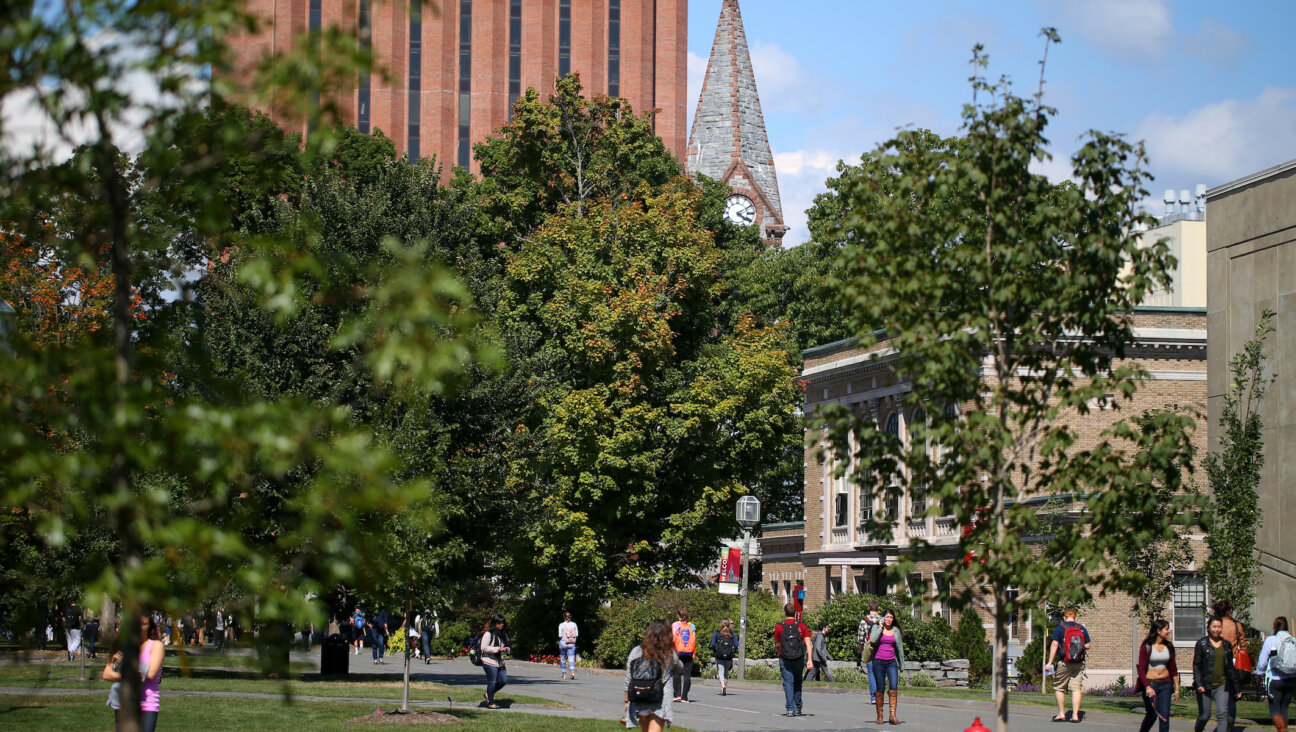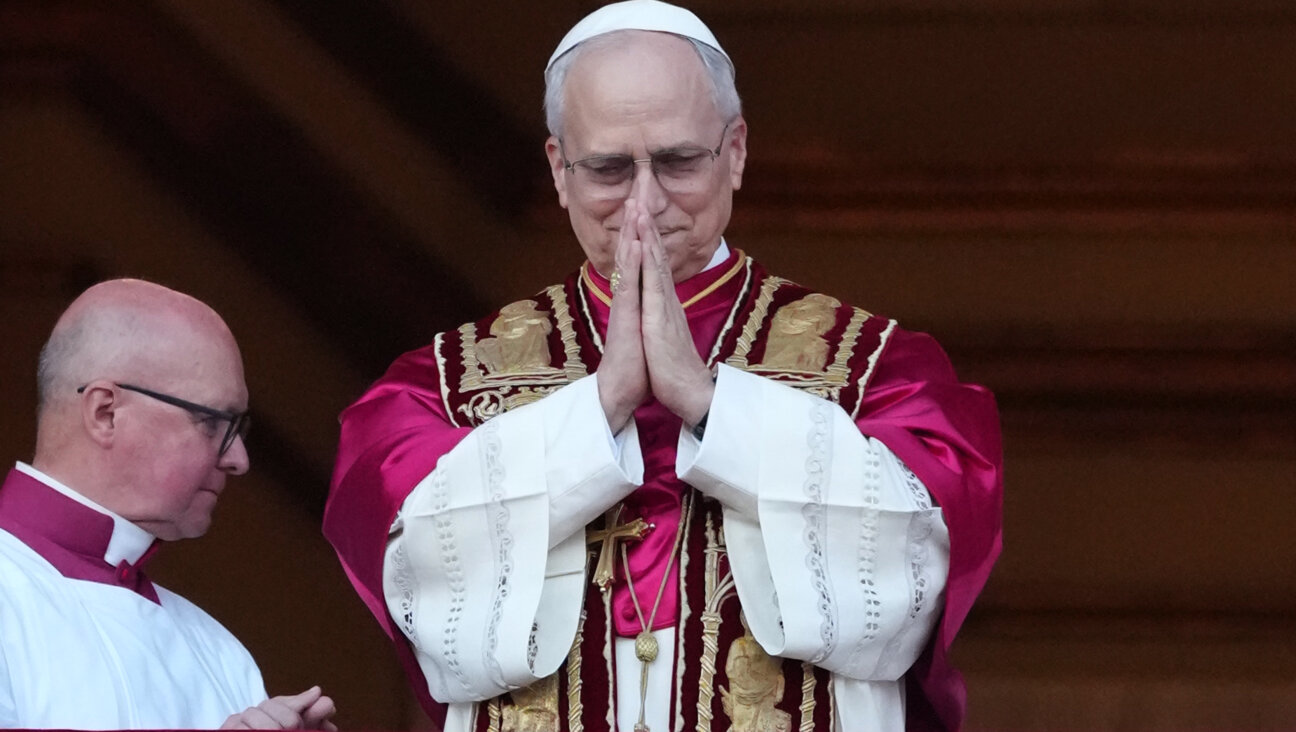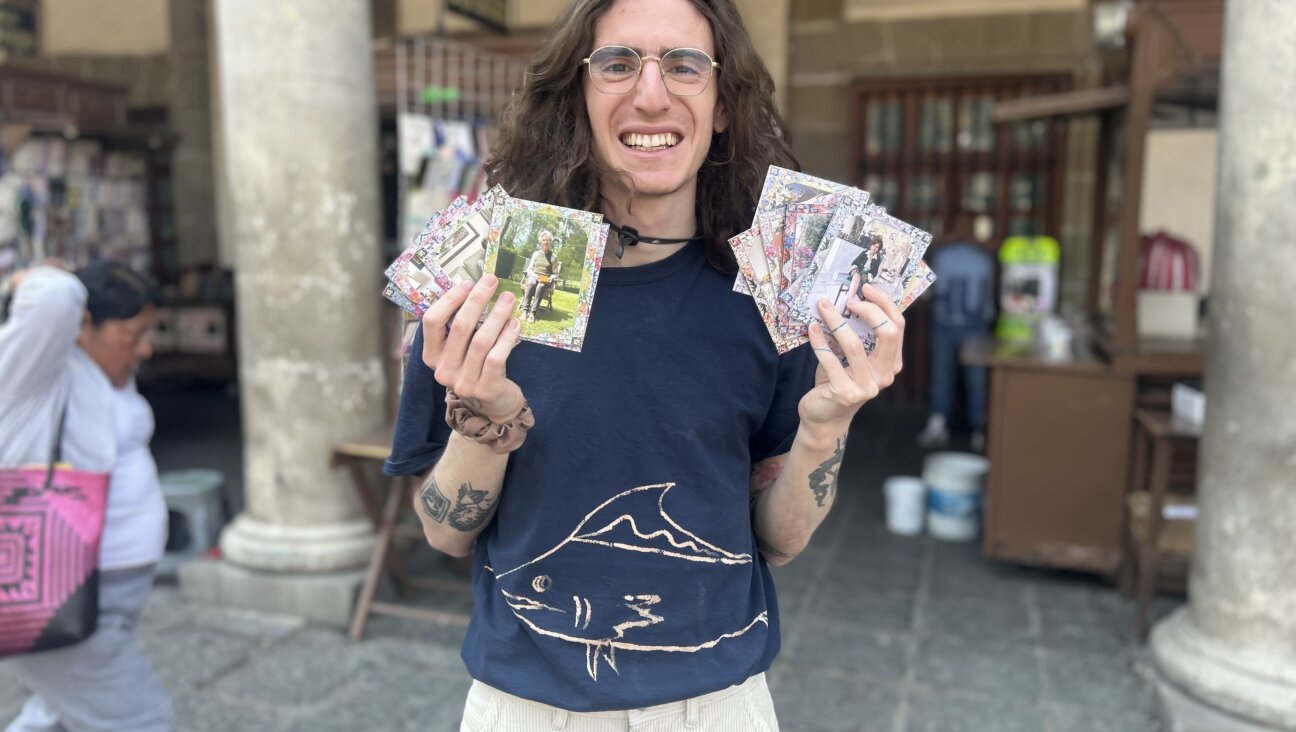How winning a Nobel Prize helped me to find my roots

Robert Lefkowitz By Getty Images
I was hiking deep in the woods near Czestochowa, Poland, and beginning to worry that our guide had gotten us lost. I was accompanied by my wife Lynn, my cousins Ellen and Judy, and Judy’s husband, Ivan. Supposedly, we were looking for my family’s roots, but I doubted we were going to find them this far out in this forest.
I had taken this trip to Poland with Lynn and my cousins because I had been invited to speak at the Polish Academy of Sciences. This invitation had come shortly after I won the Nobel Prize in 2012, and I was excited a few years later to finally be able to make the journey. It was my first trip ever to Poland, so I decided to add a few extra days to the trip to spend more time learning about my family’s ancestral home. My paternal grandparents emigrated from Poland to the USA in 1904. They were fleeing the pogroms (organized massacres of Jewish people) that were happening in Eastern Europe at that time. My father was born in New York City in 1905, which means he might have been in utero with my grandmother when she was on the run.
The suffering of the European Jews of this era has always been personal to me. During my trip to Poland with Lynn and my cousins, we toured various sites related to the Holocaust. This included the infamous concentration camps at Auschwitz and Birkenau. The horrors that went on there are frankly beyond imagining, and the tour was emotionally draining. We also toured Oskar Schindler’s factory, which is now a museum. In this factory, Schindler saved 1,200 Polish Jews from the Holocaust by employing them and bribing Nazi officials to look the other way; this story is the basis for the movie “Schindler’s List.” The Schindler museum in Krakow has a wall listing all the people who Schindler protected, and eight or nine of these names are the Polish spelling of “Lefkowitz.” There’s a good chance that some of these people were my relatives. Similarly, at the Holocaust Museum in Washington, D.C., there are many thick volumes listing alphabetically all the lives lost in the Holocaust, and numerous pages in these books are dedicated to the various spellings of the name “Lefkowitz.” There seems little doubt that some of those folks were my kin.
In advance of the Poland trip, we hired a team of local document detectives to hunt down information relating to my family. They uncovered a trove of birth certificates, marriage certificates, and other documents from my family’s past, and also were able to locate my grandparents’ old house in Czestochowa, a small town about 100 miles from Krakow. Additionally, they set us up with the guide who was now leading us deep into the woods on what increasingly seemed like a dubious quest.

Noble Nobelist: Robert Lefkowitz was awarded the National Medal of Science by George W. Bush. By Getty Images
After what seemed like an eternity tromping through the forest, we suddenly came to a small clearing that was filled with gravestones. This ancient cemetery was completely overgrown with trees and bushes, and many of the tombstones had been knocked over but were still legible. After much hunting around, we managed to find a cluster of stones engraved with the names of some of our ancestors. Our attention was immediately riveted on one stone with the surname Kremsdorf, which had the correct dates and other details to be my great-great-grandfather’s. Ellen, Judy, and I stood over our great-great-grandfather’s gravestone and took a moment to pay our respects. Even though none of us had been to Poland before, it felt like we had truly returned to our roots.
In New York City, my family’s roots run deep. I was born and raised in the Bronx, and childhood memories come flooding back whenever I visit. My extended family, like many immigrant Jewish families who came to New York City during the migration from eastern Europe, used to regularly assemble for large gatherings of the entire clan. I loved these occasions when my extended family would get together. I was an only child, so I reveled in the chance to hang out with all of my cousins. This “cousins club” in which my family participated was known as the AKD’s, which stood for “Associated Kremsdorf Descendants” (Kremsdorf being the maiden name of my paternal grandmother).
Every AKD gathering began with a business meeting, which was followed by a potluck supper and then a social hour in which the kids would perform for the adults. These get-togethers were extraordinarily well organized: we had a constitution drafted by my Uncle Charlie, who was a lawyer, and the business meetings were conducted strictly according to Robert’s Rules of Order. The family was divided into committees, which gave progress reports regarding their activities. We even had elected officers. My father served as president for four years during my childhood, which made me very proud.
After I won the Nobel Prize, I was invited back to New York for several Nobel-related events, with these visits affording me a delightful opportunity to reconnect with my extended family. One of these events was having my name engraved on the Nobel Monument. In September 2013, about a year after my Nobel Prize was announced, my family and I were invited to attend a grand ceremony in Theodore Roosevelt Park. This park is the location of the Nobel Monument, a huge bronze obelisk engraved with the names of all American Nobel Laureates. The location is especially significant to me, as Theodore Roosevelt Park borders on the Museum of Natural History, which was one of my favorite haunts as a child. I spent many afternoons with my father in the Museum of Natural History, fueling my passion for science.
The Nobel Monument is the sole monument in New York City that contains the names of living people. There’s a city ordinance in New York stipulating that only the names of deceased individuals can be featured on monuments, but the Nobel Monument was granted special status as the lone exception to this law. At the ceremony, I got goosebumps as the giant cloth over the obelisk was removed and the new engravings were unveiled. It was simultaneously exciting, inspiring, and humbling to see my name up there with Theodore Roosevelt, Albert Einstein, John Steinbeck, and the many other legends.
The experience was even more special because I was joined by several dozen members of my extended family. When I learned I was invited to the ceremony, Lynn and I mentioned it to a few of my cousins who still live in and around New York City, and they spread the word to other family members. Soon, the event became a huge family reunion, with dozens of family members announcing they would attend. Lynn and I arranged for dinner afterward at an excellent Italian restaurant close to the park. We invited all of my relatives, including a number of younger cousins whom I had not previously met. A few of my other cousins put together beautiful displays of family photos through the years. The AKD’s were well-represented, which was wonderful as I hadn’t seen many of them since our regular gatherings during my childhood. My mother’s side of the family was represented as well.
At one point in the evening, I meditated on the fact that almost everyone in the room was descended from ancestors who had fled terror, with many more who were not there because of the branches of my family that didn’t make it out of Europe. This tragic history of my family somehow made the lives of the current generation seem all the sweeter. Like many descendants of refugees from the Holocaust and various pogroms, my cousins have all led rich lives, filled to the brim with family, love, and achievements. I’m no psychiatrist, but this incredible passion for living could be construed as an attempt to redeem the suffering of our ancestors, to show that we’re not wasting the chance we’ve been given. The schmoozing and celebrating after the Nobel Monument ceremony continued unabated for many hours, and I left the party feeling elated to have reconnected with so many wonderful relatives.
A year later, I was invited back to New York for another special ceremony, this time at my alma mater Bronx Science. I had never been invited back to Bronx Science until I won the Nobel Prize; apparently, that’s the level of achievement expected of the school’s alumni in order to receive such an invitation. It is true that Bronx Science has produced more Nobel Laureates than any other secondary school in the world. When I won the Nobel Prize in 2012, I was the eighth graduate of Bronx Science to win the prize. If Bronx Science was its own country, it would rank twenty-third in terms of total Nobel Prizes won, tied with Spain and ahead of Ireland, Finland, and more than 150 other nations. Most high schools have display cases exhibiting their sports trophies; Bronx Science has a display case in the main lobby showcasing the school’s Nobel Laureates.

Memoirist: Robert Lefkowitz is the author of “A Funny Thing Happened on the Way to Stockholm” Courtesy of Pegasus Books
A special assembly was held in my honor, and the energy was unbelievable. I took a bunch of selfies with the students and also signed a ton of autographs. Amazingly, George Yancopoulos was on hand to introduce me before I spoke. George is the chief scientific officer of Regeneron Pharmaceuticals and a billionaire from all the successful drugs his company has developed. Like me, he’s an alum of both Bronx Science and Columbia, and I was honored that he would show up to be my opening act.
After the assembly, I met with the principal, Jean Donahue. She and her staff dug out some of my old documents from sixty years earlier. They had a piece of paper showing I scored 100 on the New York Regents Exam in math for three years in a row, an accomplishment that is still a point of pride for me, and they also had a full transcript with all my grades. They even had my application to Bronx Science, which I must’ve written when I was twelve years old. One of the questions was, “What is your bedtime?” and I had answered “10:30 pm”, which cracked me up because 10:30 P.M. was still my bedtime sixty years later. I guess some things never change.
At one point while walking around the school, I was approached by a wizened old woman with a devious smile.
“Do you know who I am?” she asked. I confessed that I couldn’t recall, so she continued, “My name is Ms. Engel, and I was your tenth grade math teacher.”
“Well, you obviously did a helluva job,” I deadpanned. “The principal just showed me my New York Regents exams and I scored 100 on all of them!” Ms. Engel told me that she had retired long ago but was excited to return to the school for my ceremony. We shared a lot of laughs, and catching up with her was a highlight of the trip.
Another highlight of my visit was having the chance to spend time with several of my classmates, including Mike and Barbara Bertin, Bob Kurtz, June Golden, and Harriet Cohen Geller. All of these friends have worked with me over the years to help organize the Gene Frankel Science Essay contest. One of my best friends during my Bronx Science days was Gene Frankel, who had demonstrated an unusual passion for the history of science as a high school student. He ended up living out his dream and becoming a highly respected science historian. Tragically, he died from cancer in his early forties. At the time of his death, I worked with a group of my classmates to establish a scholarship fund in Gene’s honor, with the awards given to Bronx Science students who write outstanding essays on important deceased scientists. My classmates and I have served for many years on the committee that reviews the essays for the Frankel scholarships, and reviewing these essays each year reminds me of Gene and is immensely satisfying. It also keeps me in touch with these friends from a different era of my life some sixty years ago. However, in organizing this essay contest each year, my classmates and I mainly communicate via e-mail, so it was wonderful during my return to Bronx Science to have a whole day to spend time with them in person, remembering departed friends like Gene and reminiscing about the old days.
During my visit to the Bronx, I naturally spent some time thinking about my parents. Given my family history, such thoughts often morph into meditations about my own mortality. My father had his first heart attack at 50, then had a string of additional heart attacks prior to his premature death. My mother also had her first heart attack in her fifties. Two of my four grandparents died at quite young ages. Thus, I have long known that genetics is not on my side, and indeed my grave family history of heart disease was a major reason why I became a cardiologist.
As I write these words, I am 76 years of age. Heart disease has stalked me all my life, resulting in a quadruple bypass and other interventions many years ago, but somehow I’ve managed to survive and even thrive. If I dropped dead tomorrow, nobody would say that I died young. I’ve lived long enough to see all of my children grow up, get married, and lead fascinating lives. I’ve had the pleasure of getting to know my six grandchildren, who currently range in age from four to twenty-four. I’ve also lived long enough to reach the most contented time of my professional and personal life.
When I returned to my research lab at Duke after my visit to Bronx Science, I reflected on how North Carolina has truly become my home. I’ve been there now for more than forty-five years. Poland is my ancestral homeland and New York City is the place where I grew up, but North Carolina is where my roots lay now. After my travels, I was excited to get back in town and tell my friends about my adventures in my old stomping grounds. I also felt charged up to get back in the lab and talk with my students about their most recent findings. After all, there are always new things to discover. My heart raced as I thought about some of the current directions we were exploring. A slew of exciting studies had been in progress when I left, and I was eager to see the latest data and talk with my trainees about their newest stories.
This piece is excerpted from “A Funny Thing Happened on the Way to Stockholm: The Adrenaline-Fueled Adventures of an Accidental Scientist” by Robert Lefkowitz with Randy Hall published by Pegasus Books
The Forward is free to read, but it isn’t free to produce

I hope you appreciated this article. Before you go, I’d like to ask you to please support the Forward.
Now more than ever, American Jews need independent news they can trust, with reporting driven by truth, not ideology. We serve you, not any ideological agenda.
At a time when other newsrooms are closing or cutting back, the Forward has removed its paywall and invested additional resources to report on the ground from Israel and around the U.S. on the impact of the war, rising antisemitism and polarized discourse.
This is a great time to support independent Jewish journalism you rely on. Make a gift today!
— Rachel Fishman Feddersen, Publisher and CEO
Support our mission to tell the Jewish story fully and fairly.
Most Popular
- 1

Fast Forward Ye debuts ‘Heil Hitler’ music video that includes a sample of a Hitler speech
- 2

Opinion It looks like Israel totally underestimated Trump
- 3

Culture Cardinals are Catholic, not Jewish — so why do they all wear yarmulkes?
- 4

Fast Forward Student suspended for ‘F— the Jews’ video defends himself on antisemitic podcast
In Case You Missed It
-

Culture How one Jewish woman fought the Nazis — and helped found a new Italian republic
-

Opinion It looks like Israel totally underestimated Trump
-

Fast Forward Betar ‘almost exclusively triggered’ former student’s detention, judge says
-

Fast Forward ‘Honey, he’s had enough of you’: Trump’s Middle East moves increasingly appear to sideline Israel
-
Shop the Forward Store
100% of profits support our journalism
Republish This Story
Please read before republishing
We’re happy to make this story available to republish for free, unless it originated with JTA, Haaretz or another publication (as indicated on the article) and as long as you follow our guidelines.
You must comply with the following:
- Credit the Forward
- Retain our pixel
- Preserve our canonical link in Google search
- Add a noindex tag in Google search
See our full guidelines for more information, and this guide for detail about canonical URLs.
To republish, copy the HTML by clicking on the yellow button to the right; it includes our tracking pixel, all paragraph styles and hyperlinks, the author byline and credit to the Forward. It does not include images; to avoid copyright violations, you must add them manually, following our guidelines. Please email us at [email protected], subject line “republish,” with any questions or to let us know what stories you’re picking up.














